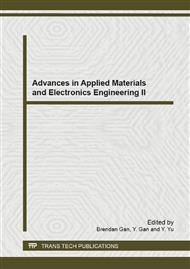p.285
p.290
p.295
p.299
p.303
p.307
p.312
p.317
p.325
Optimum Patch Dimension Ratio of T-Shaped Microstrip Antenna
Abstract:
There are various feeding methods of antenna like as coaxial probe, coupling, parasitic elements, and impedance matching. This paper adopted the microstrip line method as the feeding method of the antenna. The high frequency structure simulator is used to analyze the characteristics of the T-shaped microstrip antenna with various patch dimensions. In comparison with the basic microstrip antenna, this proposed T-shaped microstrip antenna with 40.38 % of patch dimensions has the optimum characteristics of resonant frequency, return loss, and radiation pattern at 2.0 GHz band.
Info:
Periodical:
Pages:
303-306
Citation:
Online since:
April 2013
Authors:
Keywords:
Price:
Сopyright:
© 2013 Trans Tech Publications Ltd. All Rights Reserved
Share:
Citation:


